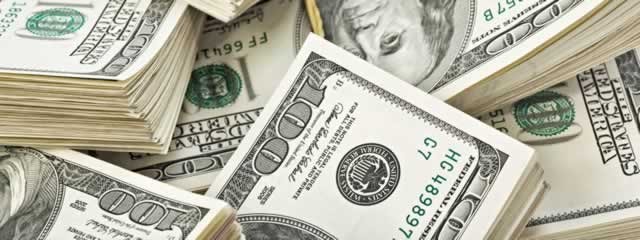The downside of a strong dollar
Post on: 27 Сентябрь, 2015 No Comment

Some see a strong dollar as a source of national pride. Thats about all it is. When an ascending dollar buys increasing amounts of foreign currencies, the worlds financial structure may end up battered.
Sure, this may be a good time to plan that European vacation. The long-weak dollar is gaining strength again, which means you may be able to afford good food, good wine and a quality hotel if you visit the Old World.
During the Federal Reserves stimulus program of the past five-plus years, called quantitative easing, the dollar was like that elderly lady in the commercials who says, Ive fallen and I cant get up. Other countries did the dollar no favors by weakening their currencies, but the resulting currency wars appear to have ended along with quantitative easing. Now the dollar is strong and getting stronger.
The good news is that the strengthening dollar will make foreign goods cheaper for American consumers (so much for inflation fears). U.S. companies may also reduce prices or keep them from rising to remain competitive.
Most Read Stories
As a result, Americans will spend less on essentials like oil and will have more money left to spend on other things, which should boost the economy. A strong dollar will also attract foreign investors to U.S. assets, such as U.S. Treasury bonds.
The bad news is that, with foreign-made goods cheaper here and our exports more expensive overseas, the trade deficit has widened, hitting $43.4billion in October, down a tick from $43.6 billion the month before. American companies that rely on exports or that have multinational locations will still be hurt.
And if you invested in foreign stocks because you think U.S. shares are overpriced (which they of course are), youll be hammered by the conversion to dollars. When the dollar reverses direction, currency risk can dilute investment gains and magnify losses.
Oh, and one more thing. The strengthening dollar could destabilize the global financial system.
Why is the dollar strengthening? Here are the chief factors:
Quantitative easing, which was the Feds equivalent of printing money, has ended.
Other countries are continuing to weaken their currencies to boost imports.
The U.S. economy is strengthening relative to the economies of other countries. Its not like anyone other than President Obama is suggesting that the U.S. economy is booming its just that foreign economies are in an even bigger funk than ours.
Skittishness over other currencies is increasing, which causes much of the world to use dollars as reserves. Recently, we reported that the dollars status as a reserve currency was in trouble. For the time being, however, dont expect a change. Apparently, not many countries see value in switching to the ruble.
Now, you may be thinking, Brenda, all you do is complain. When the dollar was weak, you complained. Now its strengthening and you complain. Arent you ever satisfied?
The situation is not that simple. As usual, the Federal Reserve Bank and other central banks play a leading role in explaining whats happened and what could happen to the global financial system.
As Charles Hugh Smith writes in his OfTwoMinds blog, the risk to the financial system stems from the unprecedented easy money actions of the worlds central banks.
In effect, he wrote, the central banks doubled down on debt and leverage as the politically expedient solution to the implosion of credit and leverage (what we call deleveraging) as the collateral underlying highly leveraged loans (think subprime mortgages on overpriced McMansions).
Any solution that forced the write-down or write-off of the mountain of bad debt would have collapsed the overleveraged banks, which had become linchpins in the global financial system.
Hes talking about the whole too big to fail conclusion here, which led to the Feds buying of trillions of dollars worth of bonds.
So, Smith concludes, the only way to maintain the status quo and avoid handing massive losses of wealth to financial elites was to issue trillions of dollars in new credit-money, lower interest rates to near zero and start buying assets from private-sector owners, turning their assets into cash that could then be used to invest overseas or in domestic stocks and bonds.
Such large-scale actions, though, always have unintended consequences. In this case, one of them was the creation of a cant-lose huge global market for carry trades. That is the borrowing and buying of assets in various currencies to take advantage of differences in yield and interest rates.
Taking advantage of the arbitrage opportunity, which technological advances make easier, financial institutions borrow money in dollars or yen at low interest rates and reinvest it in higher-yielding securities issued in other countries.
So currency markets are where the money is today, just as mortgage-backed securities were the source of huge pre-financial crisis profits in 2007. We now have $11 trillion in cross-national loans, with two thirds of it denominated in dollars, accord to The Telegraph.
For emerging markets, $11 trillion is a lot of money. They have few options for refinancing that debt, as emerging market countries dont have central banks like the Fed or the European Central Bank to bail them out.
What happens to this debt when the dollar strengthens?
Heres the risk in carry trades, Smith writes: if the currency you borrowed the money in strengthens and the currency youre receiving the interest payments in weakens, the deal sours. The rise and fall in currencies can erase the profits of the carry trade.
So you can expect another liquidity crisis, as we saw during the 2007-09 downturn, when suddenly strapped banks which invest heavily in the carry trade choke off lending.
And how do you extricate yourself from the carry trade? You sell the emerging-market assets and repatriate the money back into the currency you borrowed the money in: for example, the U.S. dollar, Smith concludes.














